November 2024 Catheter treatment support activities in Mongolia
12/10/2024
November Travel to Mongolia for treatment activities (catheter treatment support team)
On November 1st (Friday), the 4th team of Mongolian Catheter Treatment Support gathered at Counter P at Narita International Airport after 13:00, boarded Mongolian Miat Air Flight OM502 at 15:30, and headed straight to Chinghis Khan Airport in Mongolia (the secretariat had previously arrived in Mongolia on October 30th). The team this time consisted of Vice President Takashi Higaki as the team leader, as well as Dr. Tomozo Moritani (Ehime Prefectural Hospital), Dr. Masahiro Mori (Osaka Maternal and Child Medical Center), Dr. Takehiko Onoki (Miyagi Children’s Hospital), Dr. Nozomi Nishikawa (Shiga Medical University), and one student from Ehime University Graduate School of Medicine.They arrived at Chinghis Khan International Airport just after 8:30 pm that night, then drove to Ulaanbaatar city, checked in at the Ulaanbaatar hotel, and had dinner before ending the day.
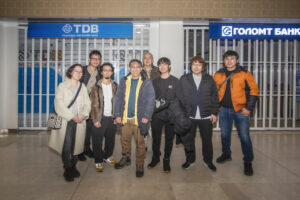
Arriving at Chinghis Khan International Airport
The next day, the first day of the activities, they performed echocardiograms on 16 patients who were waiting for detailed examination by Japanese doctors. Among them were patients with neonatal macrovascular metastases (TGA) and mitral costenosis (MS).
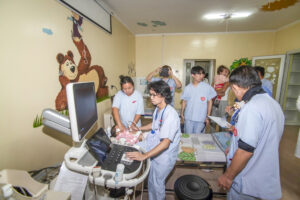

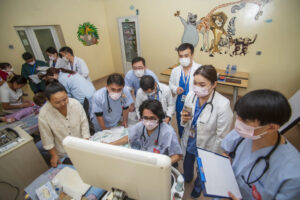
Since then, four therapeutic catheter procedures have been performed. There were 3 cases of patent ductus arteriosus and 1 case of aortic valve cooperation. Among the children targeted for this treatment was one whose illness was discovered during a local health checkup in May of this year and who was diagnosed as needing prompt treatment.Since the angiography machine at his hospital was the same model used at the National Center for Maternal and Child Health, Dr. Onoki was instructing Mongolian doctors on how to use it.
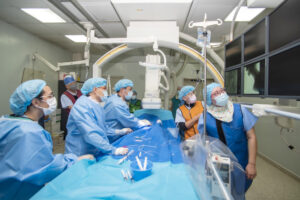
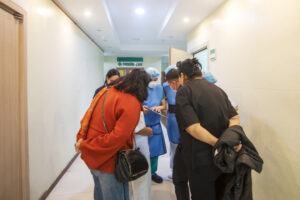
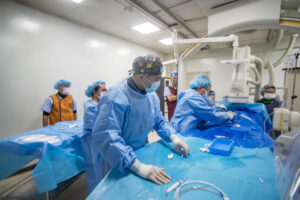
Because cardiac catheterization is performed under the guidance of a Mongolian doctor, each catheterization takes an average of two hours, longer than usual, and the catheterization was completed just after 11 p.m. that day. After that, they had dinner, then returned to the hospital and held a conference for about 2 hours. The activities ended after midnight on the first day.
On the second day, they conducted 7 caths.
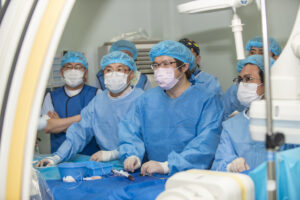
Severe cases continued
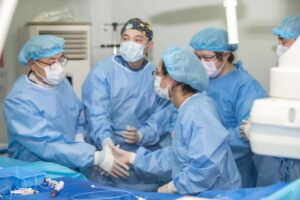
incredible collaboration considering it was our first time meeting
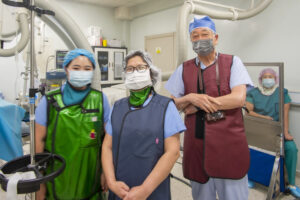
Nozomi Nishikawa (right) participating for the first time in 8 years
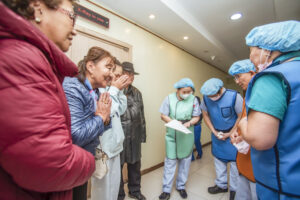
Relatives are relieved that the catheter was successfully completed
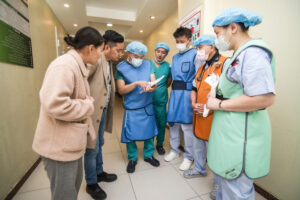
Explanation to patient’s parents
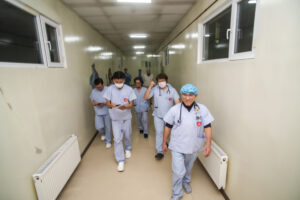
Fatigue and relief at the same time
The breakdown was 4 cases of treatment, 2 cases of diagnosis, and 1 case of discontinuation (due to a cold). These include patent ductus arteriosus (PDA), severe pulmonary valve stenosis (PS), and aortic valve stenosis (CoA). Unfortunately, there was one patient who was unable to undergo catheterization treatment because he developed a cold on the day of the treatment, and the treatment was postponed until the next time. On this day, there were many more seriously ill patients than on the first day, so it took a long time, and we finished after 11 o’clock.
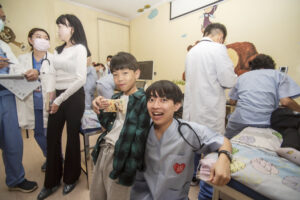
Commemorative photo with the patient after treatment
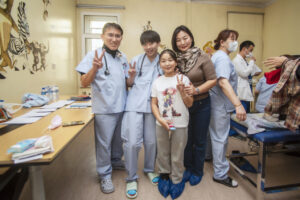
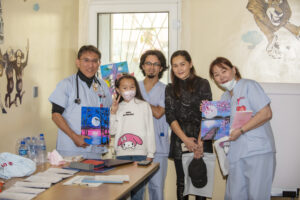
The total for this trip was 16 echocardiographic diagnoses and 10 caths, of which 8 were treatment and 2 were diagnostic. Although the cases were all severe, the participating doctors from Japan, who were here for the first time, worked together in a way that would be hard to believe for the first time, and functioned as a complete team. Our future goals include having the doctors in charge of catheterization on the Mongolian side master the basic movements, and building a team through preliminary meetings with everyone involved in catheterization, including the anesthesiologist.
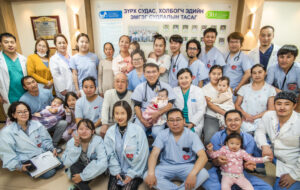
Together with the patients who received this treatment and their families
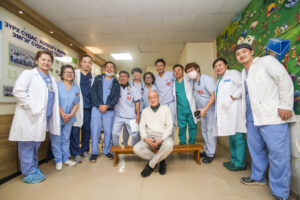
Medical teams from Japan and Mongolia gather this time
